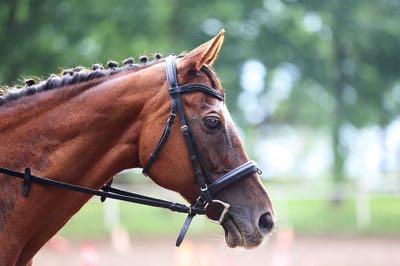 The ever-faithful dog may be labelled man’s best friend, but when it comes to four-legged beasts the horse can’t be too far behind. Joining humans in battle in centuries gone by, a key factor in early modes of transportation and an ever-willing farming assistant, few, if any, creatures can be said to have contributed so much to the human race. It’s really no wonder the horse has become so beloved, both in Britain and all around the world – be that as a working animal or as a trusted companion.
The ever-faithful dog may be labelled man’s best friend, but when it comes to four-legged beasts the horse can’t be too far behind. Joining humans in battle in centuries gone by, a key factor in early modes of transportation and an ever-willing farming assistant, few, if any, creatures can be said to have contributed so much to the human race. It’s really no wonder the horse has become so beloved, both in Britain and all around the world – be that as a working animal or as a trusted companion.
Of course, a horse is not simply a horse. Just as with dogs, our equine friends come in a wide variety of breeds, ranging from the tiny three-foot Falabella, to the mighty Shire which reaches heights of six feet or more at the shoulder. All told there are over 350 breeds of horse and ponies currently in existence, and given that wide variety of shapes and sizes, it is unsurprising that particular breeds are better suited to certain tasks and ill-suited to others. Asking a Falabella to pull a carriage, for example, would likely result in very slow progress indeed, whilst placing a small child aboard a Shire horse for a jaunt along the beach might be a little more hair-raising than necessary.
The focus of this article is, however, not upon those breeds perfectly built for rigorous farm work, nor summertime seaside entertainment, but rather on those ideally suited to the most popular equine activity on the planet – racing.
Racing’s Biggest Breeds
Of course, when we think of horse racing there is one breed that immediately springs to mind – the much-lauded Thoroughbred. The foundation animal upon which both the “Sport of Kings” on the flat and the National Hunt jumping game are built – by whatever measure, this is the breed which stands tallest in the racing world.
However, the Thoroughbred is not the only horse variety to be used in racing contests around the globe – far from it in fact. The spotted Appaloosa’s, beautiful Painted Horses and even the diminutive Shetland Pony all have their own racing events – albeit on a much smaller scale. And then there are other breeds who, whilst not quite on the same level as the Thoroughbred in terms of betting turnover or popularity, do enjoy their own thriving racing industry.
Here we take a look at the big four breeds of the horse racing world, examining their attributes and origins, and the type of contests to which they are best suited. And we will begin with the most obvious…
Thoroughbred
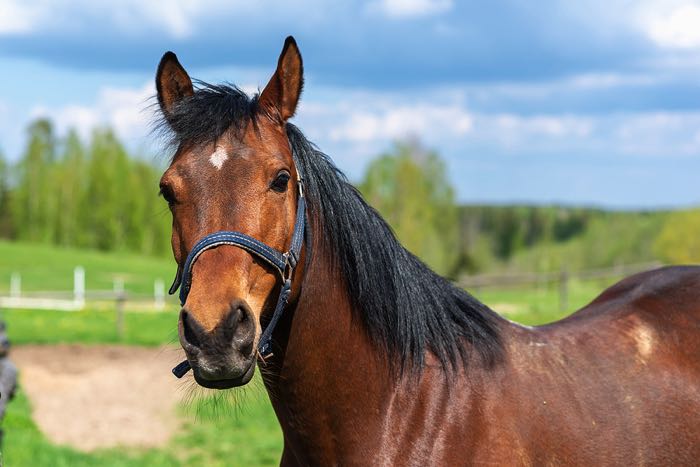
Breed Characteristics
Between 15 and 17 hands in height (the hand being the unit of measure used in sizing horses and equivalent to around four inches), Thoroughbreds weigh between 1,000lb and 1,300lb. Featuring a deep chest, long body and legs, and a lean flat muscle structure, the Thoroughbred is the Olympic athlete in equine form.
And just as with athletes, the breed comes in a variety of shapes and sizes, with the more streamlined, taller runners generally faring best over longer distances, the stronger musclebound sorts best suited to sprinting, and the more agile, tough competitors finding their homes in the sphere of jumps racing. In terms of disposition, Thoroughbreds can be a little more temperamental than other breeds but are generally considered to be highly intelligent and friendly creatures.
Origins
A common misconception with the word Thoroughbred is that it can be used to describe any purebred runner, i.e. any horse produced by the mating of two horses of the same breed – no matter what the breed. This is incorrect, with the Thoroughbred being its own distinct breed. As such all Thoroughbreds are purebreds, but not all purebreds are Thoroughbreds.
Whilst it may now be recognised as a breed in its own right, the Thoroughbred actually didn’t exist at all until the 17th century. Originating in England, racing’s top performer is the result of the cross-breeding of three imported Arabian Stallions with mares already native to these shores. Whilst the mares involved in this early breeding were relatively plentiful, the stallions numbered just three: the Byerly Turk, the Darley Arabian and the Godolphin Arabian, named in honour of their respective owners; Captain Robert Byerly, Thomas Darley and Lord Godolphin. And to this day every Thoroughbred in training, anywhere in the world, can trace their ancestry back to one of this trio, whilst the Darley and Godolphin breeding operations remain amongst the biggest in the sport.
Initially only bred and raced by wealthy individuals in the UK, it soon became clear that the Thoroughbred was the supreme equine athlete, possessing an unrivalled combination of speed, stamina and agility. The increasing quantity of Thoroughbred foals produced led to the creation of the General Stud Book in 1791, in which all Thoroughbreds would be officially registered. Today in order to be recognised as a Thoroughbred, the lineage of a horse must be able to be traced back to those three Foundation Stallions and one of 43 original “Royal Mares”.
Witnessing the success of the British Thoroughbred, other nations soon sought to emulate it, resulting in the exporting of the breed to almost every corner of the world. The USA were the first to import UK stallions in 1730, with Australia, Japan, South America and the other European racing nations following suit during the 19th century.
From relatively small beginnings, with just those three foundation stallions, the Thoroughbred industry has now grown to be very big business indeed. Solid performance at the track can lead to a lucrative breeding career for the best horses, with the process of the best horses breeding together leading to the continuous refining of the breed. These days around 100,000 foals are born worldwide every year – creating an industry worth $34 billion in the US alone!
Another notable fact about the Thoroughbred is that they all have either one of two birthdays. In order to assist with the framing of age-specific races, all Thoroughbreds born in the Northern Hemisphere are said to be born on the 1st of January, with the 1st August being the date assigned to those born in the Southern Hemisphere.
Racing Best Suited To
Thoroughbreds are the dominant force in the worlds of flat and National Hunt racing. Indeed, in the main branches of flat racing in the UK and overseas, only Thoroughbreds are eligible to compete – although non-Thoroughbred performers may take part in National Hunt racing.
Not quite so quick as the Quarter Horse at the extreme sprint trip of two furlongs, nor as stamina-laden as the Arabian in gruelling marathon competitions, Thoroughbreds nevertheless set the standard over just about all other distances; from the four-furlong sprint events on the flat to the four-mile staying contests over jumps. At full throttle, Thoroughbreds are generally able to achieve maximum speeds of around 44mph.
King of the hill in terms of athleticism, Thoroughbreds also score very highly on the versatility scale, proving themselves adept at show jumping, dressage, polo and hunting.
Standardbred
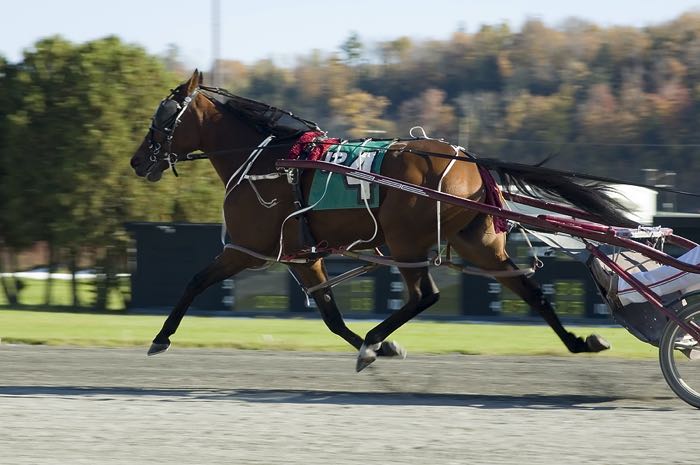
Breed Characteristics
In comparison to a Thoroughbred, the Standardbred horse tends to be more muscular and longer bodied, usually measuring between 15 and 16 hands in height, with a weight of 800lb to 1,000lb. Possessing strong refined legs, with powerful shoulders and hindquarters, the Standardbred is also notable for its amenable, placid disposition, making it a particularly easy type of horse to train.
Origins
Standardbred horses developed on the East Coast of North America during the 18th century and grew, both in terms of popularity and numbers, alongside the sport of trotting or harness racing in which they were bred to compete. For those unfamiliar with the discipline, this type of racing requires competitors to race using one of two specific gaits. Either the trot, in which the front right, and back left legs move in unison, and vice versa; or the pace in which the front right, and back right legs are in synch.
The breed name itself actually comes from the fact that in order to be officially recognised in the Standardbred Stud Book (first formed in 1879) a horse had to be capable of trotting or pacing a distance of 1m (the trip over which the vast majority of races take place) in a “standard time” of 2m30s.
Something of a smorgasbord from a breeding influence perspective, the likes of Hackneys, Morgans, Canadian Pacers and Norfolk Trotters have all contributed to the refining of the Standardbred over the years. However, the single biggest influence on the sport came via an 18th Century Thoroughbred.
Imported into the USA from the UK in 1788, a Thoroughbred by the name of Messenger gave the US a number of high-class performers, the most notable of which was his great-grandson Hambletonian 10. A decent trotter in his own right, it was in the breeding sheds that the strapping grey proved most influential. Producing 1,331 offspring in total, today every modern Standardbred runner descends from Hambletonian 10. Having played such a key role in the development of the sport, it’s only right that Hambletonion 10 has an event named in his honour, and to this day the Hambletonian Stakes is the most prestigious contest in all of US harness racing.
Racing Best Suited To
A breed effectively created alongside a particular version of racing, Standardbreds, with their strong legs, high knee action and consistent long stride, remain the dominant breed in all forms of “gaited” racing, be that harness racing (in which their strong shoulders are a big advantage), or saddle trotting in which the rider is aboard the horse rather than pulled behind in a cart or “sulkie”.
Many other breeds are used in trotting contests elsewhere in the world, including the French Trotter and Orlov Trotter, but none can quite match the Standardbred, with imported Standardbreds in fact regularly being used to upgrade the native animals. A notably quick breed, Standardbreds regularly hit a race pace of 46mph and above.
American Quarter Horse
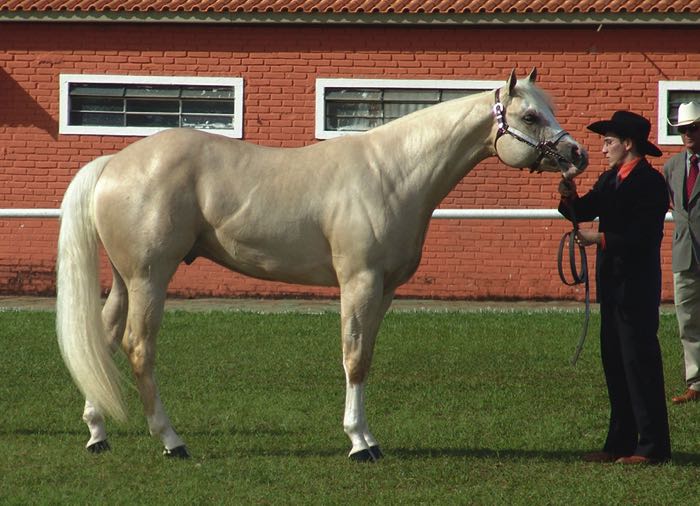
José Reynaldo da Fonseca / Wikipedia.org
Breed Characteristics
Slightly smaller than the Thoroughbred, the American Quarter Horse is typically between 14 and 16 hands in height. They do cram a lot of muscle into that height though – a quality which contributes to an average weight of 950lb to 1200lb.
Possessing a short, finely chiselled head, with a distinctive flat profile, the breeds most notable feature is its rounded and extremely powerful hindquarters. Calm natured and intelligent, the Quarter Horse is an incredibly people-friendly breed and, in terms of sheer numbers, is the most popular breed in the USA.
Origins
Bred to excel at racing over extremely short distances, the name “Quarter Horse” stems from the breeds ability to beat other breeds in races over distances of a quarter of a mile (two furlongs) or less.
The origins of the Quarter Horse hark back to the 1700s, when imported Thoroughbred’s began to be bred with a variety of native horses, with the smaller but speedy Spanish Mustang being one of the most common matings. Initially beginning racing at a fairly lowly level in Carolina and Virginia – with short local roads or fields regularly being used as the course – the focus upon racing over short distances has endured, with the breed being continually refined for speed over the years. In addition to the Spanish Mustang, early influences included the Native Indian horses, with a Thoroughbred by the name of Janus from the Godolphin Arabian line later playing a major role.
In addition to their speed, Quarter Horses are also renowned for their seemingly natural ability to comfortably work with cows, making them a popular choice for cattlemen working out on the ranches. Indeed, in the early years, many Quarter Horses were employed as working horses during the week and used for racing at the weekend.
Much like Thoroughbred and Standardbred runners, the Quarter Horse also has its own studbook, designed to preserve the pedigrees of the breed. Unlike the Thoroughbred though, this is not quite a closed book. American Quarter Horses may be bred with Thoroughbreds, and whilst the resulting foals will only initially be listed in the appendix, they may later be added to the studbook proper if meeting certain conformational and performance standards. Overall, this process leads to a continual flow of Thoroughbred blood into the Quarter Horse gene pool which many fans argue – perhaps with some justification – is diluting the breed. Of course, it should also be remembered that it was the breeding of Thoroughbreds with the native animals which played such a pivotal role in the initial development of the breed.
Racing Best Suited To
The American Quarter Horse can be thought of as the 100m sprinter of the racing world, using those strong, muscular haunches to produce explosive bursts of speed. They don’t quite possess the stamina of the Thoroughbred over trips of anything beyond three furlongs, but these powerhouse performers will not be beaten at short straight tracks over distances of up to two furlongs. Regularly clocking speeds of up to 55mph, even the speediest of Thoroughbreds will likely find themselves blown away over these extreme minimum distances.
Predominantly employed in the sport of Quarter Horse Racing, over race distances of between one furlong and four furlongs, the breed’s compact physique and nimbleness of foot also sees it excel at barrel racing – a discipline which requires competitors to rapidly race short distances between barrels laid out in a set pattern. And in the fields of Rodeo and Western events, all those generations on the ranches and their in-built “cow sense” make the Quarter Horse the dominant breed by some distance. A real all-rounder, the Quarter Horse can also be spotted taking part in show competitions, dressage and show jumping, in addition to being the staple family horse in the United States.
Arabian
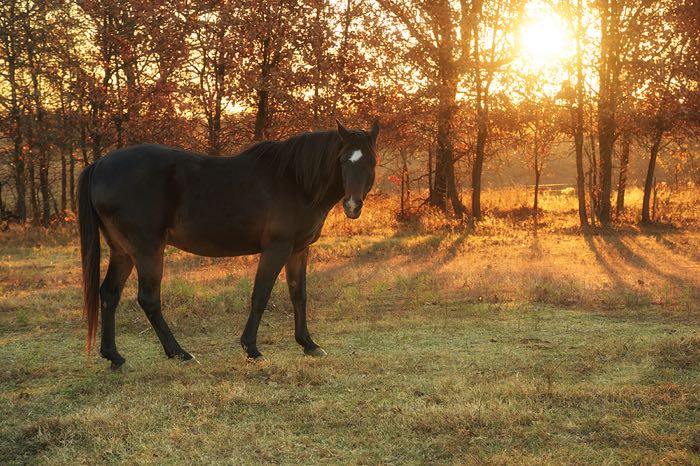
Breed Characteristics
Distinguishable by their wedge-shaped head and wide forehead, Arabians possess large eyes and nostrils but a smaller muzzle than many other breeds.
Slightly smaller than the Thoroughbred, with an average height of between 14 and 16 hands and an average weight of 800lb to 1000lb, the Arabian is notable for its lithe, light-framed body, long neck, short back and powerful hindquarters.
The skin of the Arabian is also the thinnest of the four major racing breeds, helping to prevent overheating; whilst stronger than average bones and nimble feet enable the breed to tackle a range of difficult terrain.
Origins
One of the oldest horse breeds in the world, the noble Arabian has been around for at least 4,000 years now. Originally used as a warhorse by the nomadic Bedouins – as the name would suggest – Arabians are native to the stiflingly hot and arid climes of the Arabian Peninsula.
Over time these animals developed the necessary stamina to trek vast distances over inhospitable terrain, often with only minimal food and water. In such attritional conditions, only the toughest of beasts endured, with the strongest becoming highly attractive breeding commodities, resulting in those qualities of endurance becoming further enhanced over the centuries. Sheer stamina wasn’t quite enough for these animals though. A degree of speed was also required in order to both quickly invade enemy territory and, crucially, to flee when necessary.
In addition to being one of the longest standing breeds in the equine world, the Arabian has perhaps been the most influential on the species as a whole. Without the Arabian, there would of course be no Thoroughbred, and without the Thoroughbred, no Standardbred or Quarterhorse. With Appaloosas, Morgans, Andalusians and more also featuring a strong Arabian influence in their bloodlines, this tough and beautiful breed is effectively the true father of equine racing all around the world.
Racing Best Suited To
Unsurprisingly given their history traversing vast swathes of desert landscape, the Arabians are the dominant breed in endurance racing – a version of the sport which sees horses competing over distances of up to 25 miles in single-day events, and 100+ miles in gruelling multi-day marathons.
Almost untouchable in endurance competition, Arabians also have their own programme of races held over more conventional distances. Most popular in the Arabian nations, these “Arabian Horse Only” events can also be spotted as additional races on the odd British race card throughout the year.
Boasting excellent intelligence, the Arabian’s versatility doesn’t stop there, with the breed regularly seen competing with credit in US Western events, Show Jumping and Dressage. The average speed of an Arabian is around 35mph, although they have been recorded at speeds of up to 40mph.
